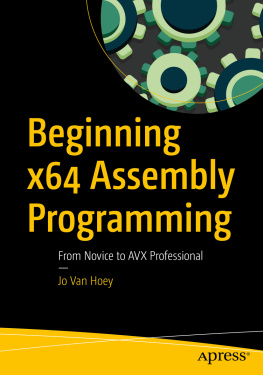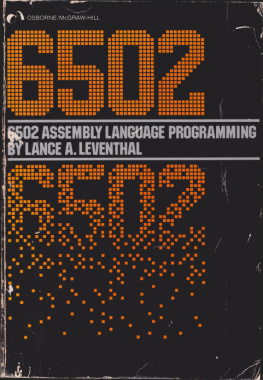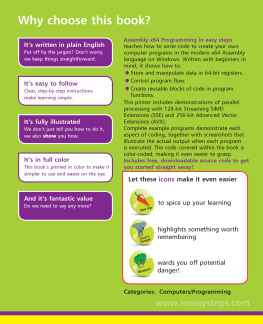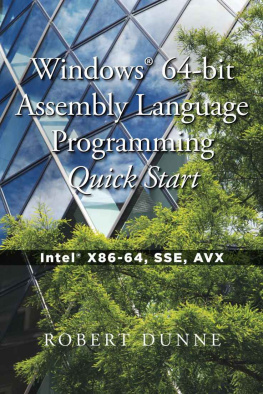Jo Van Hoey - Beginning x64 Assembly Programming
Here you can read online Jo Van Hoey - Beginning x64 Assembly Programming full text of the book (entire story) in english for free. Download pdf and epub, get meaning, cover and reviews about this ebook. year: 2019, publisher: Apress, genre: Home and family. Description of the work, (preface) as well as reviews are available. Best literature library LitArk.com created for fans of good reading and offers a wide selection of genres:
Romance novel
Science fiction
Adventure
Detective
Science
History
Home and family
Prose
Art
Politics
Computer
Non-fiction
Religion
Business
Children
Humor
Choose a favorite category and find really read worthwhile books. Enjoy immersion in the world of imagination, feel the emotions of the characters or learn something new for yourself, make an fascinating discovery.
- Book:Beginning x64 Assembly Programming
- Author:
- Publisher:Apress
- Genre:
- Year:2019
- Rating:3 / 5
- Favourites:Add to favourites
- Your mark:
- 60
- 1
- 2
- 3
- 4
- 5
Beginning x64 Assembly Programming: summary, description and annotation
We offer to read an annotation, description, summary or preface (depends on what the author of the book "Beginning x64 Assembly Programming" wrote himself). If you haven't found the necessary information about the book — write in the comments, we will try to find it.
Beginning x64 Assembly Programming — read online for free the complete book (whole text) full work
Below is the text of the book, divided by pages. System saving the place of the last page read, allows you to conveniently read the book "Beginning x64 Assembly Programming" online for free, without having to search again every time where you left off. Put a bookmark, and you can go to the page where you finished reading at any time.
Font size:
Interval:
Bookmark:
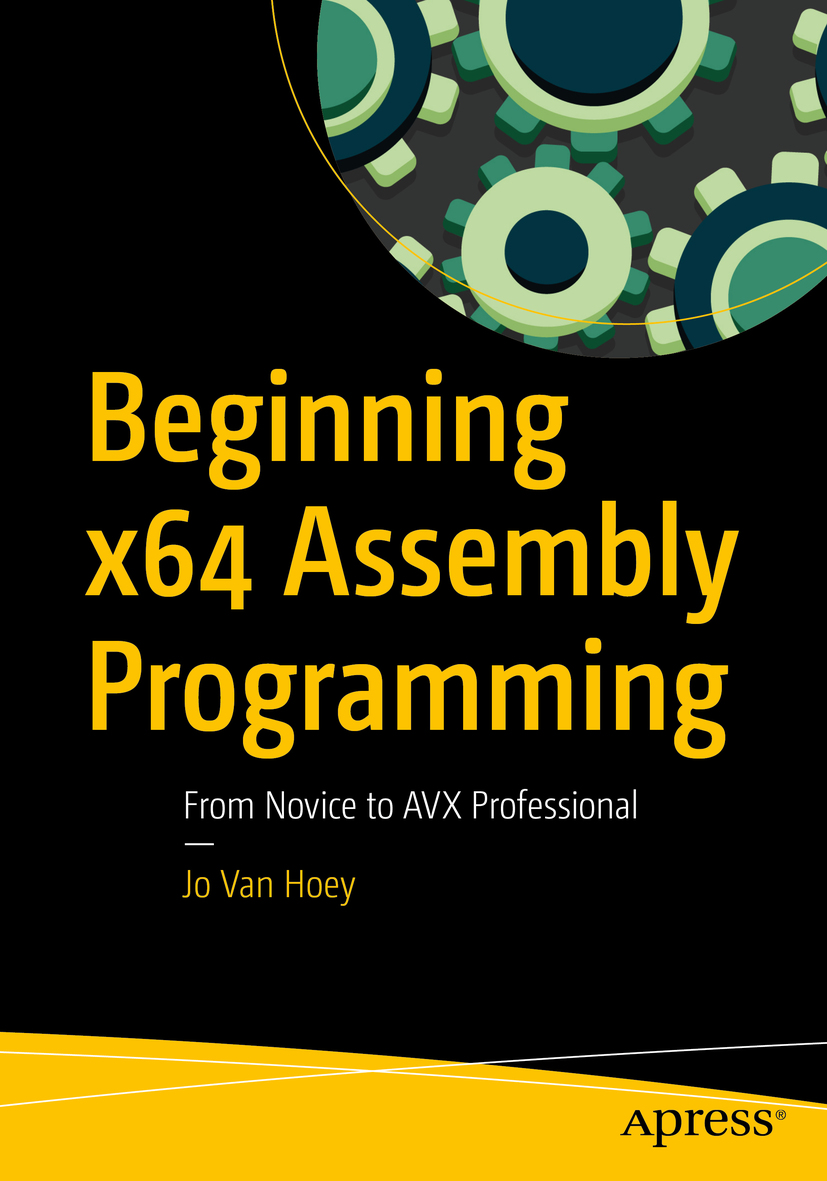

Any source code or other supplementary material referenced by the author in this book is available to readers on GitHub via the books product page, located at www.apress.com/9781484250754 . For more detailed information, please visit www.apress.com/source-code .
Learning to program in assembly can be frustrating, not in the least because it is an unforgiving language; the computer will yell at you on every possible occasion. And if it doesnt, you may just have unknowingly introduced a hidden bug that will bite you later in your program or at execution time. On top of that, the learning curve is steep, the language is cryptic, the official Intel documentation is overwhelming, and the available development tools have their own peculiarities.
In this book, you will learn to program in assembly starting with simple programs and moving all the way up to Advanced Vector Extensions (AVX) programming. By the end of this book, you will be able to write and read assembly code, mix assembly with higher-generation languages, understand what AVX is, and more. The purpose of this book is to show you how to use assembly language instructions. This book is not about programming style or code performance optimization. After you have acquired basic knowledge of assembly, you can continue learning how to optimize your code. This book should not be the first book you read on programming; if you have never programmed before, put this book aside for a while and learn some basics of programming with a higher-level language such as C.
All the code used in this book can be accessed via the Download Source Code link at www.apress.com/9781484250754 . The code used in this book is kept as simple as possible, which means no graphical user interfaces or bells and whistles or error checking. Adding all these nice features would deviate our attention from the purpose: to learn assembly language.
The theory is kept to a strict minimum: a little bit on binary numbers, a short presentation of logical operators, and some limited linear algebra. And we stay far away from doing floating-point conversions. If you need to convert binary or hexadecimal numbers, find a web site that does that for you. Dont waste your time doing the calculations manually. Stick to the purpose: learning assembly.
The assembly code is presented in complete programs so that you can test them on your computer, play with them, change them, break them....
We will also show you what tools can be used, how to use them, and the potential problems in those tools. Having the right tools is essential to overcoming the steep learning curve. At times we will point you to books, white papers, and web sites that can be useful or that give more details.
It is not our intention to give you a comprehensive course on all of the assembly instructions. That is impossible in one book (look at the size of the Intel manuals!). We will give you a taste of the main items so that you will have an idea about what is going on. If you work through this book, you will acquire the knowledge to investigate certain domains in more detail on your own. When you have finished this book, you will be able to study the Intel manuals and (try to) make sense of their content.
The majority of the book is dedicated to assembly on Linux, because it is the easiest platform to learn assembly language. At the end, we provide a number of chapters to get you on your way with assembly on Windows. You will see that once you have Linux assembly under your belt, it is much easier to take on Windows assembly.
There are a number of assemblers available for use with Intel processors, such as FASM, MASM, GAS, NASM, and YASM to name a few. We will use NASM as in this book, because it is multiplatform; it is available on Linux, Windows, and macOS. Also, it has a relatively large user base. But dont worry, once you know one assembler, it will be easy to adopt another assemblys dialect.
We have carefully written and tested the code used in this book. However, if there are any typos in the text or bugs in the programs, we do not take any responsibility. We blame them on our two cats, who love to walk over our keyboard while we are typing.
The ideas and opinions we present in this book are our own and dont necessarily represent IBMs positions, strategies, or opinions.
You should know how to install and manage virtualization software (VMware, VirtualBox, or similar) . If you dont have a clue what that means, download the free Oracle VirtualBox software ( https://www.virtualbox.org ), install it, and learn to use it by installing, for example, Ubuntu Desktop Linux as a guest operating system (OS). Virtualization software allows you to install different guest operating systems on your main machine, and if you mess things up in the guest system, you can delete that guest system and reinstall it. Or if you have taken a snapshot, you can return to a previous version of your guest installation. In other words, theres no harm to your main (host) operating system when experimenting. There are plenty of resources on the Internet explaining VirtualBox and other virtualization software solutions.
Font size:
Interval:
Bookmark:
Similar books «Beginning x64 Assembly Programming»
Look at similar books to Beginning x64 Assembly Programming. We have selected literature similar in name and meaning in the hope of providing readers with more options to find new, interesting, not yet read works.
Discussion, reviews of the book Beginning x64 Assembly Programming and just readers' own opinions. Leave your comments, write what you think about the work, its meaning or the main characters. Specify what exactly you liked and what you didn't like, and why you think so.

